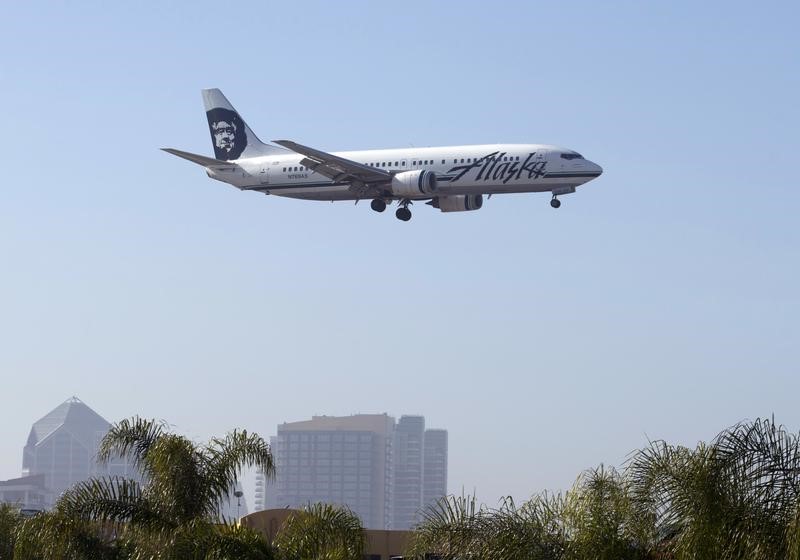Investing.com -- Shares in Alaska Air (NYSE:ALK) Group rose around 4% in premarket trading Thursday after the company reported better-than-expected Q4 results and Q1 2025 earnings guidance.
The airline reported fourth-quarter earnings per share (EPS) of $0.97, surpassing consensus expectations of $0.43. Revenue was reported at $3.53 billion for the quarter, also higher than the estimated $3.41 billion.
"Lower unit costs and fuel drove the beat to our model with positive commentary on sustained leisure demand and an uptick in corporate travel," Bank of America analysts commented, maintaining a Buy rating on the stock.
Revenue per available seat mile (RASM) came in at 15.54 cents, reflecting a 3.9% year-over-year increase.
"This was a transformational year as we brought Hawaiian Airlines into Alaska Air Group and began our journey to unlock $1 billion in incremental pretax profit over the next three years," said Alaska Air Group CEO Ben Minicucci.
"We're proud that our incentive plan will reward Alaska Airlines and Horizon Air employees with nearly six weeks of pay, which we believe will lead the industry. Looking forward, our vision is clear and we're focused on executing our strategic plan – leveraging the strengths of our combined network, enhancing the end-to-end travel experience for our guests, and delivering value for everyone who depends on us."
Looking ahead, Alaska Air Group provided guidance for the first quarter of 2025, projecting an EPS loss in the range of $0.70 to $0.50, which is slightly better than the consensus expectation of $0.75 loss.
The company expects first-quarter capacity to grow between 2.5% and 3.5%, with RASM projected to increase by a high-single-digit percentage compared to pro forma results for the same period in 2024.
Moreover, costs per available seat mile excluding fuel (CASMex) are expected to rise by a low- to mid-single-digit percentage compared to pro forma 2024.
For the full year 2025, Alaska Air Group forecasts EPS of $5.75, below the consensus estimate of $5.97, while maintaining its previous guidance of annual capacity growth between 2% and 3%.
